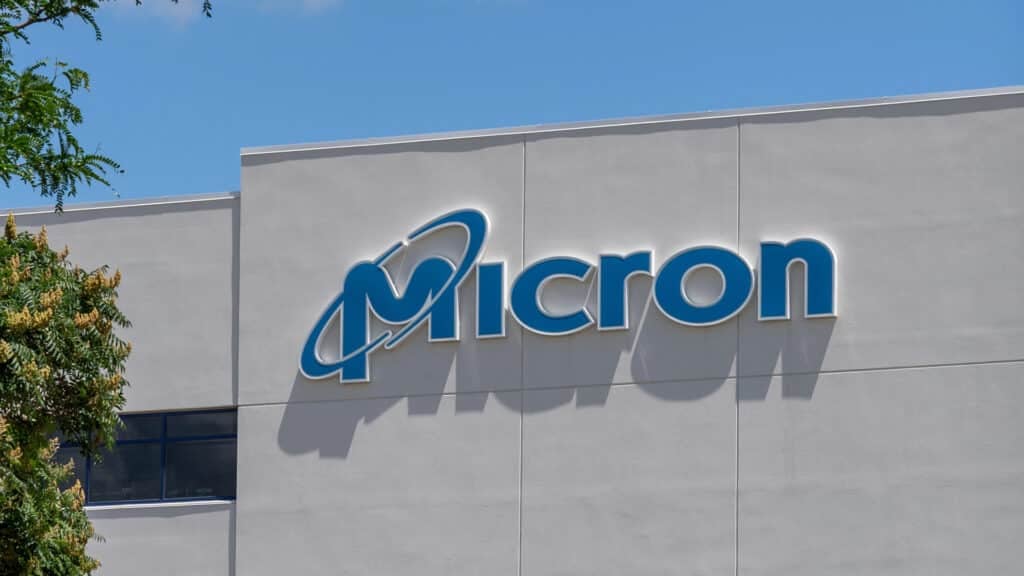Analyst(s): Richard Gordon
Publication Date: February 12, 2025
Lattice Semiconductor’s FY 2024 results reflect resilience amid inventory normalization. Nexus and Avant platform products achieved double-digit growth while improving backlog and expanding product portfolio to support FY 2025 growth plans.
What is Covered in this Article:
- Lattice Semiconductor’s Q4 FY 2024 and FY 2024 financial results
- Market stabilization signals and inventory normalization
- Nexus and Avant platforms’ double-digit revenue growth
- Expanding software capabilities and PQC opportunities
- Q1 FY 2025 growth outlook and long-term strategy
The News: Lattice Semiconductor (NASDAQ: LSCC) reported Q4 FY 2024 revenue of $117.4 million (-31% year-on-year or YoY), which was in line with consensus expectations. Non-GAAP gross margin stood at 62.1% (Q4 FY 2023: 70.4%), which was well below the consensus estimate of 68%. Non-GAAP operating income was $20.1 million (Q4 FY 2023: $64.6 million), reflecting an operating margin of 17.1% (Q4 FY 2023: 37.8%). Non-GAAP net income stood at $20.2 million (Q4 FY 2023: $62.8 million), with a non-GAAP diluted earnings per share (EPS) of $0.15 (Q4 FY 2023: $0.45), which was below the street estimate of $0.19.
For FY 2024, Lattice reported revenue of $509.4 million, representing a 31% decline from FY 2023. Non-GAAP gross margin stood at 67.4% (FY 2023: 70.4%). Full-year non-GAAP operating profit fell by 57% to $127.6 million, reflecting an operating margin of 25.1% (FY 2023: 39.8%). Non-GAAP net income was $124.4 million (FY 2023: $280.7 million), and non-GAAP diluted EPS came in at $0.90 (FY 2023: $2.04).
“We achieved record design wins, significantly reduced operating expenses, and delivered a strong 31.8% adjusted EBITDA margin in 2024,” said Ford Tamer, CEO of Lattice Semiconductor. “We are starting to see signs of improvement in the broader market environment as evidenced by our stronger backlog and improved book to bill, which bode well for our business moving forward.”
Lattice Semiconductor Sees Stabilization Signs Despite Q4 FY 2024 Revenue Decline
Analyst Take: Lattice Semiconductor’s Q4 FY 2024 results reflect a strategic focus on weathering short-term cyclical challenges while positioning for long-term growth. The company’s deliberate approach to resource realignment, expanding its product portfolio, and achieving strong design wins highlight its readiness for a U-shaped recovery in FY 2025. Strengthening demand signals – especially in the automotive and industrial markets – combined with improvements in backlog and book-to-bill ratios add further confidence in the company’s upward trajectory.
Encouraging Signs of Market Stabilization
Despite a 31% YoY decline in revenue for Q4 FY 2024, there are early signs of stabilization. Most notably, Lattice’s book-to-bill ratio surpassed 1.0x for the first time in six quarters, suggesting that demand is beginning to outpace supply. Management pointed to recovery signals in core end markets, particularly industrial and automotive, which collectively accounted for 46% of the company’s FY 2024 revenue. Lattice anticipates channel inventory will normalize to mid-range target levels by mid-FY 2025.
Inventory levels were reduced in Q4 FY 2024, with inventory days falling to approximately 207 days, down from 242 days in Q3 FY 2024. This improvement is largely attributed to rising customer demand and tighter management of channel inventories. CEO Ford Tamer expressed optimism that the worst of the inventory correction is behind them, clearing the path for a stronger recovery in H2 FY 2025, supported by a stronger backlog.
Nexus and Avant: Driving Future Revenue Growth
The Avant platform, launched in late 2022, marked Lattice’s entry into the mid-range field-programmable gate arrays (FPGAs) market, significantly expanding its total addressable market (TAM) to $10 billion. While Lattice has historically focused on small-scale FPGAs – reprogrammable semiconductor devices – with Avant it is now able to target high-growth areas such as edge AI, robotics, data centers, and 5G infrastructure. Avant’s higher average selling prices (ASPs), which are nearly ten times greater than those of smaller FPGAs, position it as a key contributor to both revenue and margin expansion.
The Nexus platform, which serves as the foundation for Lattice’s low-power FPGA offerings, continues to evolve with the launch of Nexus 2 in December 2024. This next-generation platform delivers improved power efficiency, enhanced performance, and upgraded security features, enabling Lattice to meet increasing demand for edge processing and industrial automation solutions.
In FY 2024, the Nexus and Avant platforms drove double-digit revenue growth, with their combined contribution reaching the mid-teens as a percentage of total revenue – almost double their share from FY 2023. In Q4 FY 2024, Lattice expanded its Avant platform with the Avant 30 and Avant 50 devices, offering new capacity and packaging options for edge-optimized and advanced connectivity applications. With strong design-win momentum and increasing adoption across the automotive, industrial, and communication markets, Avant is on track to become a cornerstone of Lattice’s long-term growth strategy.
Expanding Software Capabilities for Differentiation
Lattice’s six software solution stacks – including sensAI, mVision, Automate, and Propel – play a critical role in differentiating its FPGA offerings. These software solutions simplify development across key application areas like industrial automation, embedded vision, and edge AI, reducing design complexity and accelerating time-to-market. Over 50% of new design wins now integrate at least one of these solution stacks, resulting in higher average selling prices and deeper customer relationships.
During the December 2024 Developers Conference, Lattice announced significant updates to its Radiant and Propel software tools, introducing new debugging capabilities, advanced power optimization features, and expanded functional safety support. These upgrades help reduce development cycles and improve design accuracy, making Lattice’s software ecosystem increasingly attractive and sticky for customers.
In security applications, Lattice is capitalizing on the growing importance of post-quantum cryptography (PQC). With evolving regulatory standards pushing for PQC compliance, the company’s early adoption of PQC positions it as a leader in this space. As concerns rise over state actors stockpiling encrypted data for future decryption with quantum technologies, Lattice’s proactive approach has secured design wins across major Tier-1 original equipment manufacturers (OEMs) in the networking and security sectors.
Near-Term Recovery Outlook and Long-Term Growth Strategy
For FY 2025, Lattice forecasts low single-digit revenue growth, with sales expected to reach between $115 million and $125 million as inventory levels normalize by mid-year. The company expects its non-GAAP gross margin to stabilize around 69% in Q1 FY 2025, up from the 62.1% reported in Q4 FY 2024. Non-GAAP earnings per share (EPS) are projected to range between $0.20 and $0.24.
Looking ahead, Lattice remains committed to its goal of achieving 15% to 20% annual revenue growth over the long term. The continued ramp-up of the Avant and Nexus platforms, along with the growing adoption of edge AI solutions, will be key drivers. The shift toward mid-range FPGAs and increasing attach rates for software solutions will also play a crucial role in boosting margins.
Lattice’s gross margins are among the highest in the semiconductor sector, surpassing competitors like Altera and Xilinx, and approaching those of industry leaders such as Nvidia and Analog Devices. This margin resilience, even during periods of declining revenue, positions Lattice for a strong rebound in H2 FY 2025.
Read the full press release on the Lattice Semiconductor website.
Disclosure: The Futurum Group is a research and advisory firm that engages or has engaged in research, analysis, and advisory services with many technology companies, including those mentioned in this article. The author does not hold any equity positions with any company mentioned in this article.
Analysis and opinions expressed herein are specific to the analyst individually and data and other information that might have been provided for validation, not those of The Futurum Group as a whole.
Other insights from The Futurum Group:
Lattice Semiconductor Q3 2024 Earnings: Still Fighting Industry Headwinds
NVIDIA Faces China Antitrust Heat – A Recap from The Six Five Webcast
Lattice Semiconductor Appoints Ford Tamer as New Chief Executive Officer
Author Information
Richard Gordon is Vice President & Practice Lead, Semiconductors for The Futurum Group. He has been involved in the semiconductor industry for more than 30 years, first in engineering and then in technology and market research, industry analysis, and business advisory.
For many years, Richard led Gartner's Semiconductor and Electronics practice, building a 20-person global team covering all aspects of semiconductor industry research, from manufacturing to chip markets and end applications. Having served on Gartner's Senior Research Board and as Gartner's Chief Forecaster, Richard has extensive experience in developing and implementing methodologies for market sizing, share and forecasting, to deliver data, analysis and insights about the competitive landscape, technology roadmaps, and market growth drivers.
Richard is a sought-after technology industry analyst, both as a trusted advisor to clients and also as an expert commentator speaking at industry events and appearing on live TV shows such as CNBC.




